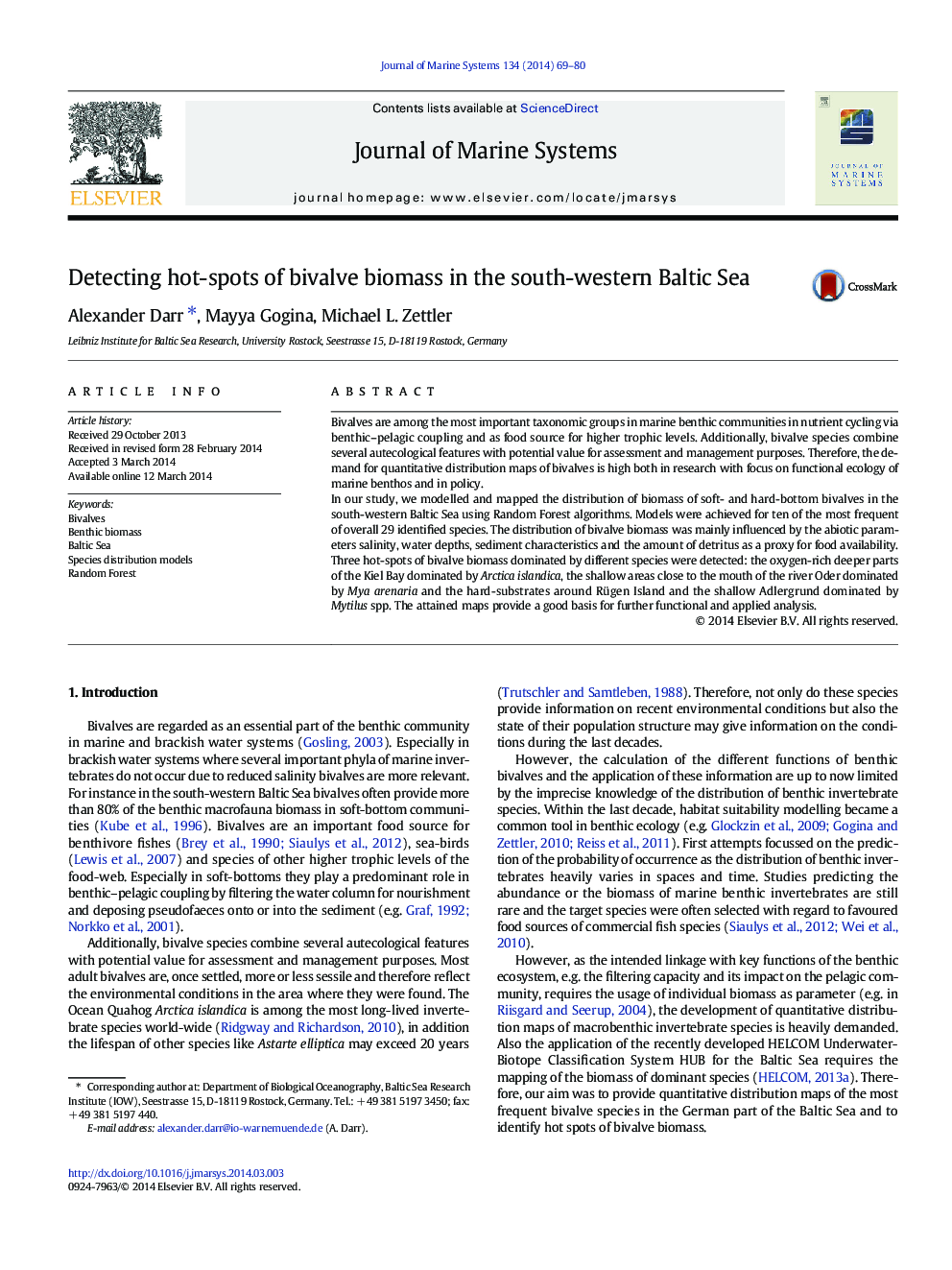| کد مقاله | کد نشریه | سال انتشار | مقاله انگلیسی | نسخه تمام متن |
|---|---|---|---|---|
| 4548044 | 1627295 | 2014 | 12 صفحه PDF | دانلود رایگان |
• Biomass of 10 bivalve species was modelled in the south-western Baltic Sea using RF.
• The RF-algorithm was able to reproduce the distribution pattern of these species.
• Three biomass hot-spot areas with different dominating species were detected.
• Salinity, water depths, substrate and food availability were the main drivers.
Bivalves are among the most important taxonomic groups in marine benthic communities in nutrient cycling via benthic–pelagic coupling and as food source for higher trophic levels. Additionally, bivalve species combine several autecological features with potential value for assessment and management purposes. Therefore, the demand for quantitative distribution maps of bivalves is high both in research with focus on functional ecology of marine benthos and in policy.In our study, we modelled and mapped the distribution of biomass of soft- and hard-bottom bivalves in the south-western Baltic Sea using Random Forest algorithms. Models were achieved for ten of the most frequent of overall 29 identified species. The distribution of bivalve biomass was mainly influenced by the abiotic parameters salinity, water depths, sediment characteristics and the amount of detritus as a proxy for food availability. Three hot-spots of bivalve biomass dominated by different species were detected: the oxygen-rich deeper parts of the Kiel Bay dominated by Arctica islandica, the shallow areas close to the mouth of the river Oder dominated by Mya arenaria and the hard-substrates around Rügen Island and the shallow Adlergrund dominated by Mytilus spp. The attained maps provide a good basis for further functional and applied analysis.
Journal: Journal of Marine Systems - Volume 134, June 2014, Pages 69–80
